
Beans are among the few high-quality sources of protein that lend themselves to trouble-free long-term storage, so it's not surprising that they're a staple food in many cultures. Even in the United States where food is plentiful, traditional comfort-food dishes, such as baked beans, are still treasured. A perfect pot of beans should be naturally thick and rich, but if you run out of time, you can always cheat and thicken your beans with a little bit of cornstarch.
Perfect Baked Beans
Baked beans have an almost infinite number of regional and personal variations, so you can start a good argument on the subject almost anywhere. Some cooks prefer small navy or Great Northern beans, while others prefer black-eyed, yellow-eyed, Jacob's cattle or some less common choice. The sauce might contain pork, tomatoes, brown sugar, molasses, mustard or any number of other ingredients, but it's usually got both sweet and tart flavors to complement the mellow richness of the beans. Ideally, the whole pot would slow-cook long enough for the beans' own starches to thicken the sauce to a satisfyingly thick consistency.
Cheating
Sometimes your beans take longer to soften than usual, or you mistakenly add too much liquid, or perhaps you have to eat earlier than you expected. As long as the beans are fully cooked and soft, it's perfectly fine to cheat by thickening the sauce separately. To do this, just pour off at least 2 or 3 cups of the cooking liquids into a separate saucepan, and then make a slurry with cold water and a tablespoon or two of cornstarch. Stir the starch into the bean juices and cook them on the stovetop until the sauce thickens. Then stir it back into your beans.
Mashing
If you have a little more time at your disposal, you can speed the natural thickening of the bean sauce by mashing a small portion of the beans. For example, if you have your beans in a 4-quart slow cooker, scoop out as much as 2 or 3 cups of beans, and at least as much sauce. Put the beans and sauce in a saucepan and mash them with a potato masher. Then simmer them together until they form a thick paste. Stir the paste back into your beans, and let them simmer for another 10 to 15 minutes before serving.
Other Starches
If someone in your family has a corn allergy, or if you're just out of cornstarch, you can thicken the sauce with any other starchy ingredient you have on hand. Instant or quick-mixing flour makes the sauce opaque, but the flour's fuller texture resembles the bean starches more than cornstarch does. Regular flour also works, although you'll need to cook it longer on the stovetop than you would with quick-mixing flour. If you keep less-common starches, such as arrowroot or potato starch, in your pantry, they'll also work -- and they won't affect the flavor or texture of your sauce noticeably.
Related Articles

How to Make Homemade Red Bean Paste ...
How to Cook Beans & Soup Bones in a ...

How to Reconstitute Dried Beans
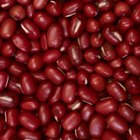
How to Soak Adzuki Beans
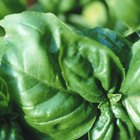
How to Make & Freeze Homemade Spaghetti ...

How to Cook Petai

How to Rehydrate Chickpeas

How to Soften Beans After Cooking

Can I Substitute Chickpeas for Black ...

How Do I Thicken Curry?

How to Make Ranch-Style Beans

How to Cook Beans
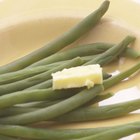
How to Cook Dragon's Tongue Beans
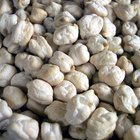
How to Freeze Garbanzo Beans
Easy Crock-Pot Baked Beans Recipe
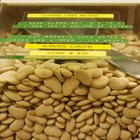
How to: Crock-Pot Lima Bean Soup

Substitutes for Garbanzo Bean Flour

How to Thicken Sauce With Powdered ...

How to Thicken the Stock of Chicken & ...
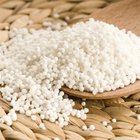
What Is the Nutritional Value of ...
References
- The Cook's Thesaurus: Starch Thickeners
- On Food and Cooking: The Science and Lore of the Kitchen; Harold McGee
Writer Bio
Fred Decker is a trained chef and certified food-safety trainer. Decker wrote for the Saint John, New Brunswick Telegraph-Journal, and has been published in Canada's Hospitality and Foodservice magazine. He's held positions selling computers, insurance and mutual funds, and was educated at Memorial University of Newfoundland and the Northern Alberta Institute of Technology.
Photo Credits
Alexandra Grablewski/Lifesize/Getty Images